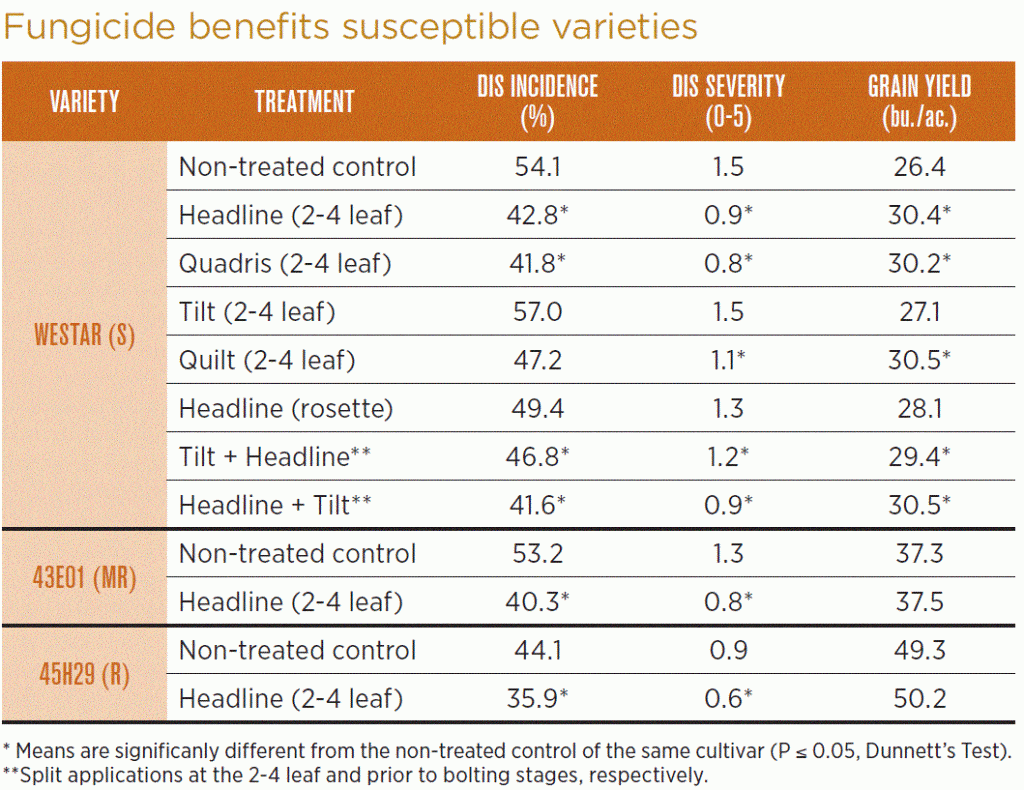Key Result
Consider early application of fungicide for blackleg management only when disease risk is high due to short crop rotations, erosion of cultivar resistance, or hail damage.
Project Summary
Blackleg is the most widespread fungal disease of canola in Western Canada and poses a serious threat to production. Selecting a rotation of R-rated varieties and maintaining a minimum break of two to three years between canola crops may protect against blackleg risk and allow effective long-term management of this disease.
Pathogen race shifts have been reported in recent years which may be linked to overuse of the same blackleg resistance genes in canola varieties. The trend towards tighter rotations due to market opportunities also increases the pathogen inoculum pressure. With increasing risk, prevalence and severity across the Prairies, growers have questions about which fungicides are most efficient, cost-effective and when they should be applied.

Gary Peng with AAFC led this four-year study to assess the benefits of fungicide treatments based on application timing and host resistance. A total of 17 site years were analyzed from five field sites in Vegreville, AB, Scott and Melfort, SK, and Brandon and Carman, MB.
In these tests, the blackleg-susceptible canola variety Westar was used to represent a worst-case scenario of resistance breakdown. Infection relied mostly on diseased canola residues in the plot areas. Several foliar fungicides registered for blackleg control in canola were applied: Headline, Tilt, Quadris and Quilt Xcel. Application timings varied from: the 2 to 4 leaf stage, split application at the 2 to 4 leaf and prior to bolting, or an application of Headline alone just prior to bolting. These results were compared to unsprayed plots as a control.
Over all site years, all but two of these treatments (Tilt applied at the 2 to 4-leaf stage or Headline alone prior to bolting) reduced blackleg and increased seed yield in the susceptible variety. This was also the trend when analyzing the eight site years where infection occurred at moderate to high levels (average disease severity of greater than 1.0). However, in the nine site years with low levels of the disease severity, these differences were not evident.
Disease incidence and severity on the moderately resistant and resistant canola varieties in this study were of similar patterns as those of the susceptible variety, with or without fungicide treatment. However, seed yield from the MR and R tests was higher and did not significantly benefit from any fungicide application, producing more seed than Westar with or without a fungicide treatment.
Recommendations
- Genetic resistance and longer crop rotations continue to be the main course of action for blackleg management in Western Canada.
- Scout crops for accurate identification of the proportion of plants affected by the disease (shortly after swathing) to estimate economic impact based on disease incidence and severity (see below) for blackleg management planning.
- Scout crops for accurate identification of the proportion of plants affected by the disease (shortly after swathing) to estimate economic impact based on disease incidence and severity (see below) for blackleg management planning.
- Strobilurin foliar fungicide application at the 2 to 4-leaf stage may be considered only when the variety is susceptible (short crop rotations or after hail damage) and disease risk is high. Multiple applications are generally not required for maximum efficacy.
- A routine application of foliar blackleg fungicide is not recommended in canola fields growing blackleg resistant varieties.





